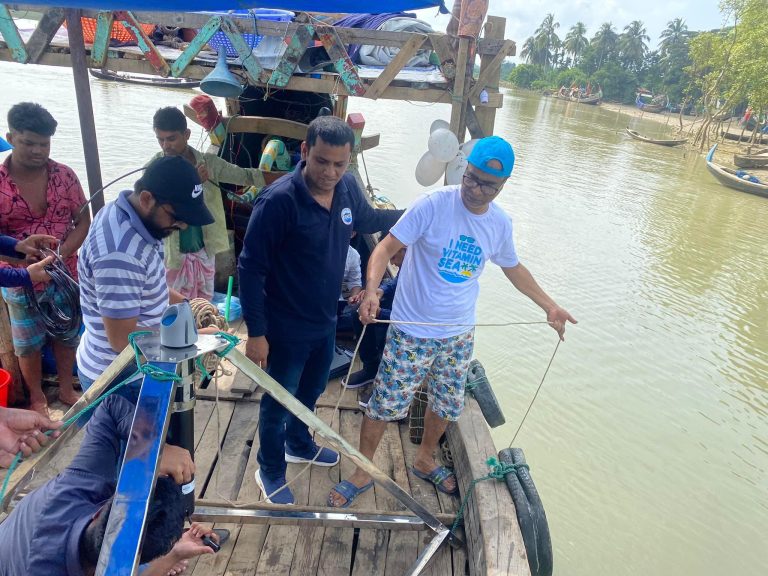Real-time water Quality Monitoring Systems

- Real-time Water Quality (RTWQ) Monitoring
Real-time water quality monitoring (RTWQ) is the continuous measurement of water quality parameters in a stream, river, lake, or other body of water. The data collected from RTWQ systems can be used to track changes in water quality over time, to identify sources of pollution, and to make decisions about how to improve water quality.
RTWQ systems typically consist of sensors that measure water quality parameters, a datalogger that collects data from the sensors, and a telemetry system that transmits data from the datalogger to a central location. The data from RTWQ systems can be accessed in real time or stored for later analysis.
- RTWQ systems can be used to monitor a variety of water quality parameters, including:
pH: pH is a measure of how acidic or alkaline a water sample is.
Temperature: Temperature is a measure of how hot or cold a water sample is.
Conductivity: Conductivity is a measure of the ability of water to conduct electricity. It is an indirect measure of the dissolved ions in water.
Turbidity: Turbidity is a measure of how cloudy a water sample is.
Dissolved oxygen: Dissolved oxygen is the amount of oxygen that is dissolved in water.
Total suspended solids: Total suspended solids are solid particles that are suspended in water.
ORP: Oxidation-reduction potential (ORP) is a measure of the ability of water to oxidize or reduce substances. It is a measure of the balance between oxidizing and reducing agents in water.
Chlorophyll: Chlorophyll is a pigment found in plants and algae. It is used to measure the amount of algae in water.
Biological oxygen demand (BOD): BOD is a measure of the amount of oxygen that is consumed by bacteria as they break down organic matter in water.
Chemical oxygen demand (COD): COD is a measure of the amount of oxygen that is consumed by chemicals as they break down organic matter in water.
Total coliforms: Total coliforms are a group of bacteria that are found in the intestines of warm-blooded animals. Their presence in water can be a sign of fecal contamination.
- coli: E. coli is a type of coliform bacteria that is often used as an indicator of fecal contamination.
Nitrate: Nitrate is a form of nitrogen that can be harmful to aquatic life.
Nitrite: Nitrite is a form of nitrogen that can be harmful to aquatic life.
Phosphorus: Phosphorus is an essential nutrient for aquatic life, but too much phosphorus can lead to algae blooms.
RTWQ systems can be used to track changes in water quality over time, to identify sources of pollution, and to make decisions about how to improve water quality. For example, RTWQ systems can be used to track the effects of a new factory on the water quality of a river. If the factory is discharging pollutants into the river, the RTWQ system can be used to track the levels of pollutants in the river and to identify the source of the pollution. RTWQ monitoring is becoming increasingly important as water resources become scarcer and more polluted. It can be used to:
- Track changes in water quality: Real-time water quality monitoring can be used to track changes in water quality over time, which can be used to identify trends and to assess the effectiveness of water quality control measures.
- Identify areas with poor water quality: Real-time water quality monitoring can be used to identify areas with poor water quality, which can be used to inform public health decisions and to target water quality control measures.
- Warn people about water pollution events: Real-time water quality monitoring can be used to warn people about water pollution events, such as algal blooms or oil spills.
RTWQ systems are becoming increasingly important as water quality becomes a more pressing issue. They are a valuable tool for tracking water quality, identifying sources of pollution, and making decisions about how to improve water quality.
- Here are some of the benefits of using RTWQ systems:
- Real-time data: RTWQ systems provide real-time data about water quality, which can be used to quickly identify problems and take action.
- Continuous monitoring: RTWQ systems can continuously monitor water quality, which can help to identify trends and to track the effectiveness of pollution control measures.
- Portability: RTWQ systems are often portable, which makes them easy to deploy in remote locations.
- Here are some of the challenges of using RTWQ systems:
- Cost: RTWQ systems can be expensive to purchase and maintain.
- Data quality: The quality of data collected from RTWQ systems can be affected by factors such as sensor accuracy and environmental conditions.
- Complexity: RTWQ systems can be complex to install and operate.
Overall, RTWQ systems offer a number of benefits for tracking water quality, identifying sources of pollution, and making decisions about how to improve water quality. However, they also pose some challenges. The decision of whether or not to use an RTWQ system will depend on the specific needs of the application.






